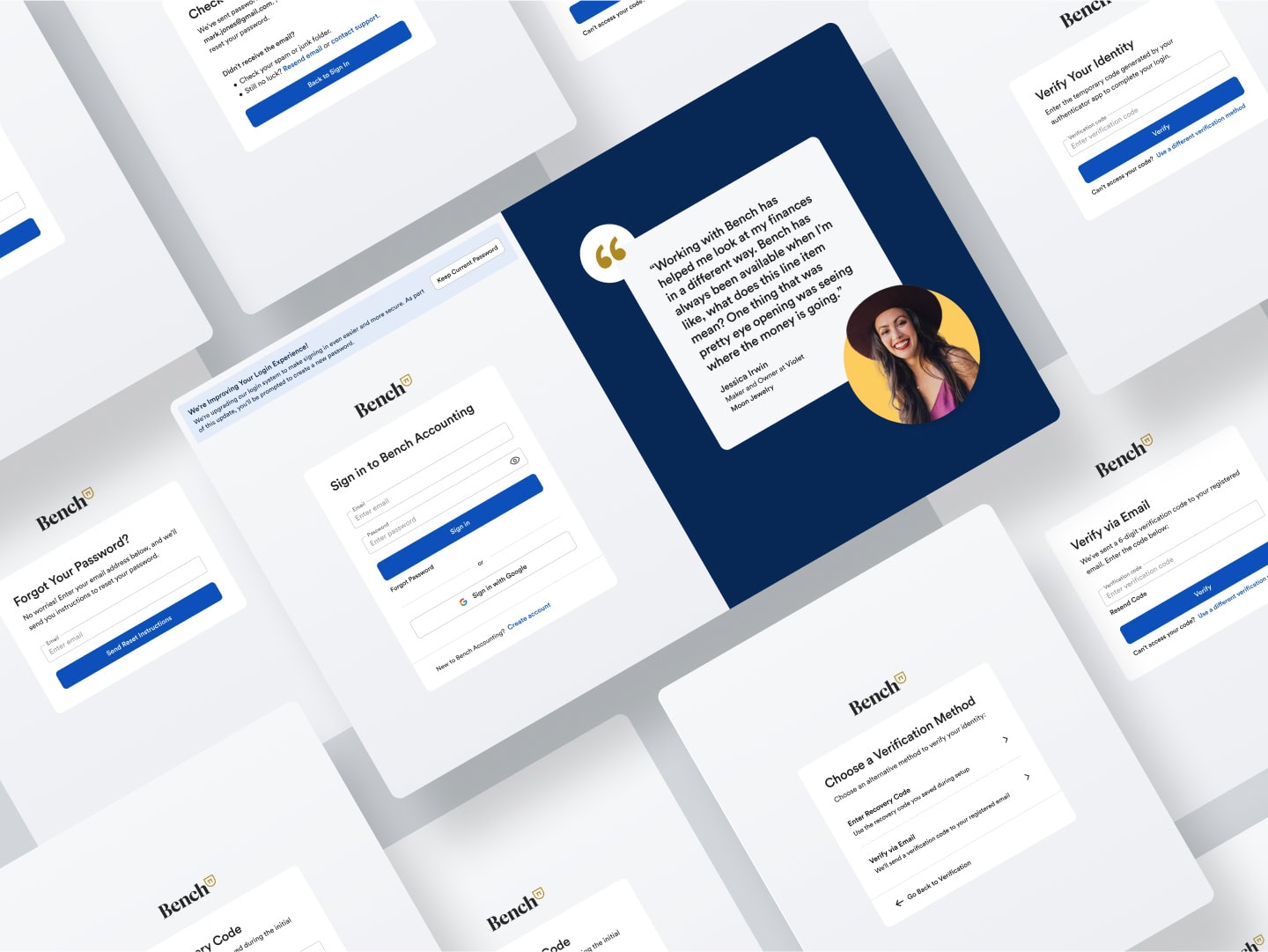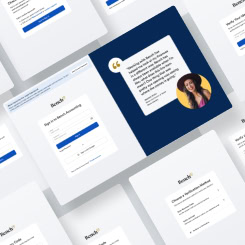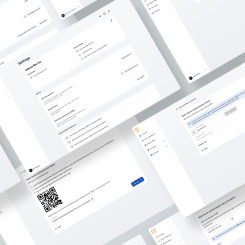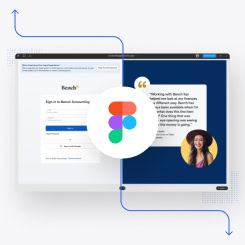WORK
Bench User Access Management
Enhanced login security with MFA and Google Sign-In for easier, more secure access.
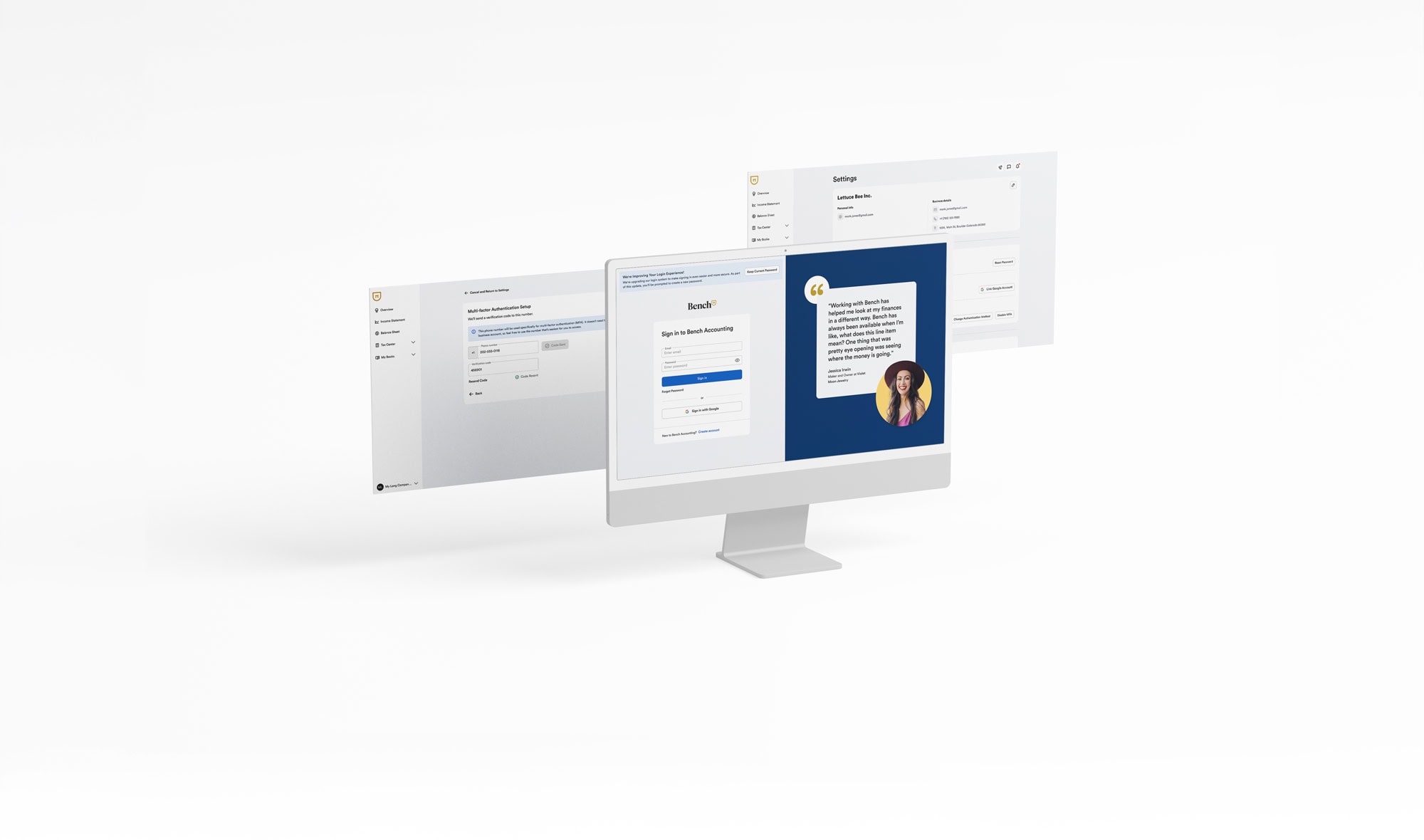
MEDIUM
UX, UI
DELIVERABLES
User Access Management
PROJECT ROLE
Lead Product Designer
Project overview:
As the Lead Product Designer on the Get and Setup team, I worked closely with our Principal Product Manager and engineering team to redesign the user access and authentication experience. My role encompassed leading UX discovery, mapping user flows, creating low-fidelity wireframes, prototyping, and delivering detailed designs for development. By collaborating across disciplines, I helped define the project scope and ensured alignment between user needs, technical constraints, and business objectives.
To enhance security and provide a better user experience, we migrated from Auth0 to AWS Cognito. The existing system’s limitations resulted in frequent password resets, a tedious login experience, and inadequate user management features. AWS Cognito introduces a more user-friendly interface, supports social logins, and incorporates robust multi-factor authentication (MFA). This transition streamlines account management, minimizes security risks, and improves overall customer satisfaction.
Customer Problems:
“Resetting my password every time I forget it is such a hassle.”
Frustrating Password Reset Process:
- Users often face a frustrating password reset process, making account access time-consuming.
“Why can’t MFA be a default option?”
Inconvenient MFA Request Process
- Requiring users to request MFA separately creates unnecessary friction, leaving accounts more vulnerable compared to other services that offer MFA by default.
Business Problem:
Our current system, reliant on outdated legacy infrastructure and Auth0, limits flexibility in user access management. Customers struggle to assign temporary access to collaborators or employees, while Bench specialists, who aren’t the customer’s dedicated bookkeeper, often retain unnecessary permissions for extended periods, exposing security risks.
How might we empower users with seamless account control and flexible access management while enhancing engagement through improved login and communication features?
Hypothesis:
By redesigning the access management system with AWS Cognito, incorporating social logins, and enabling user-managed MFA, we have the opportunity to significantly improve the customer experience. This solution aims to reduce frustration caused by frequent password resets, enhance satisfaction through seamless account control, and minimize security risks. By providing greater clarity, flexibility, and ease of access, the login process becomes more intuitive and secure, fostering stronger customer trust, improved engagement, and better customer retention.
Objectives
- Enhanced User Control: Empower users with flexible login options, including social logins and self-managed MFA.
- Reduced Password Resets: Decrease password reset requests with intuitive recovery and login features.
- Seamless Migration: Ensure a smooth transition to Cognito with minimal disruption for existing users.
- Improved Communication: Leverage the customizable login page to keep users informed about updates and new features.
What We’ll Measure:
- Adoption Rate: Percentage of users transitioning to the new system within the first month.
- Login Success Rate: Increase in successful logins and returning users post-launch.
- Password Resets: Reduction in password reset requests after the rollout.
- Engagement: Interaction rates with social logins and user-managed MFA settings.
Design process:
This project was initiated to facilitate the migration from Auth0 to AWS Cognito, addressing technical limitations in our existing authentication system. Auth0’s constraints, such as frequent password reset issues and inflexible user management, highlighted the need for a more scalable and secure solution.
The engineering team led the initial kickoff, outlining the technical requirements for the migration and opportunities to enhance the user experience. Features like social logins, multi-factor authentication (MFA), and improved account management were identified as priorities. As the Lead Product Designer, I collaborated with the Product Manager and engineering team to align on the business goals and user needs, ensuring the project was set up for success. This foundational work informed the discovery phase and shaped our approach to designing a more intuitive and secure authentication experience.

Discovery
I conducted competitive analysis and reviewed user flows from similar platforms to identify opportunities for improvement in access management and security.
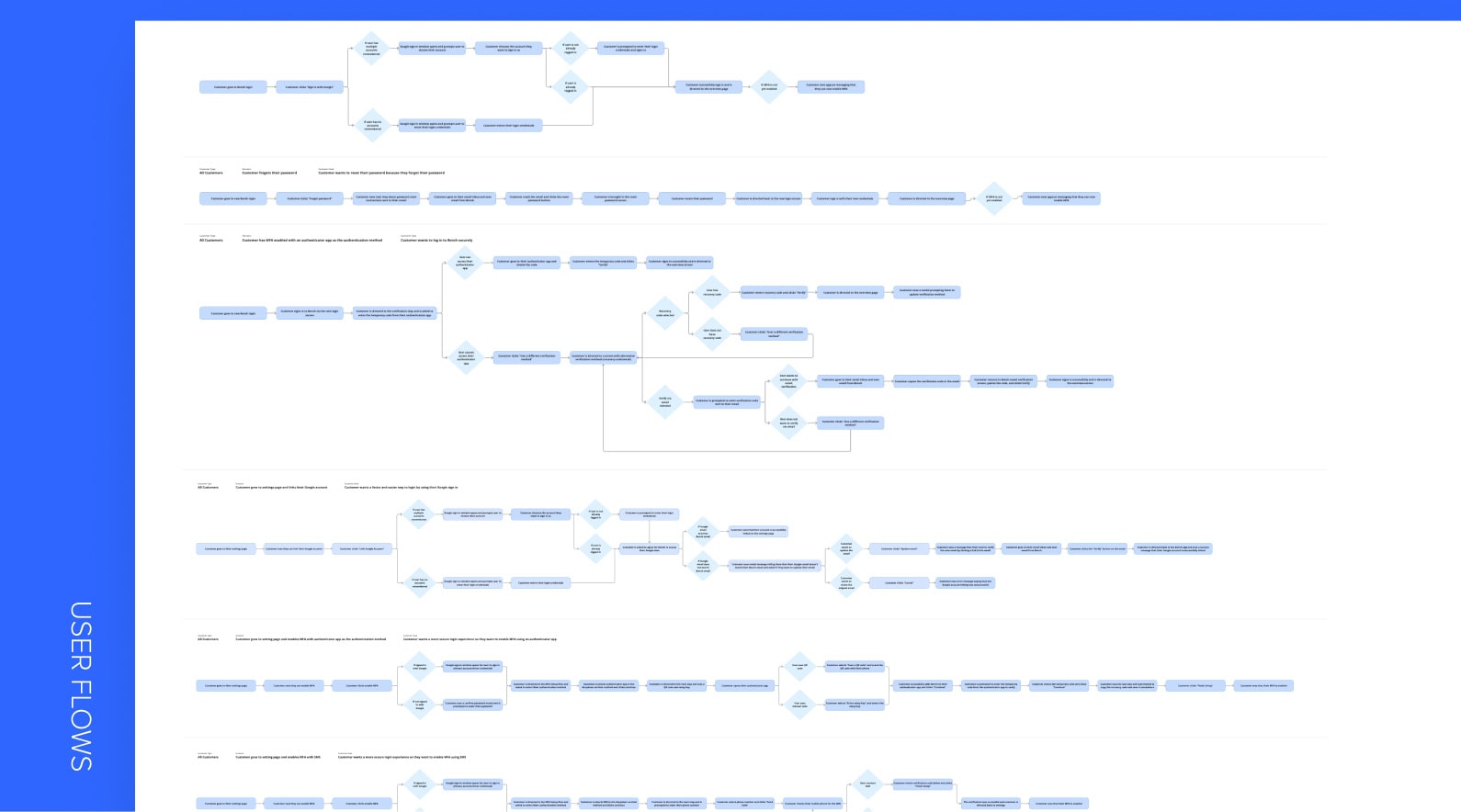
User Flows
I designed user flows to handle a range of scenarios, from first-time logins to managing MFA and transitioning from Auth0. Each flow addresses potential complexities, ensuring a smooth and intuitive user experience.
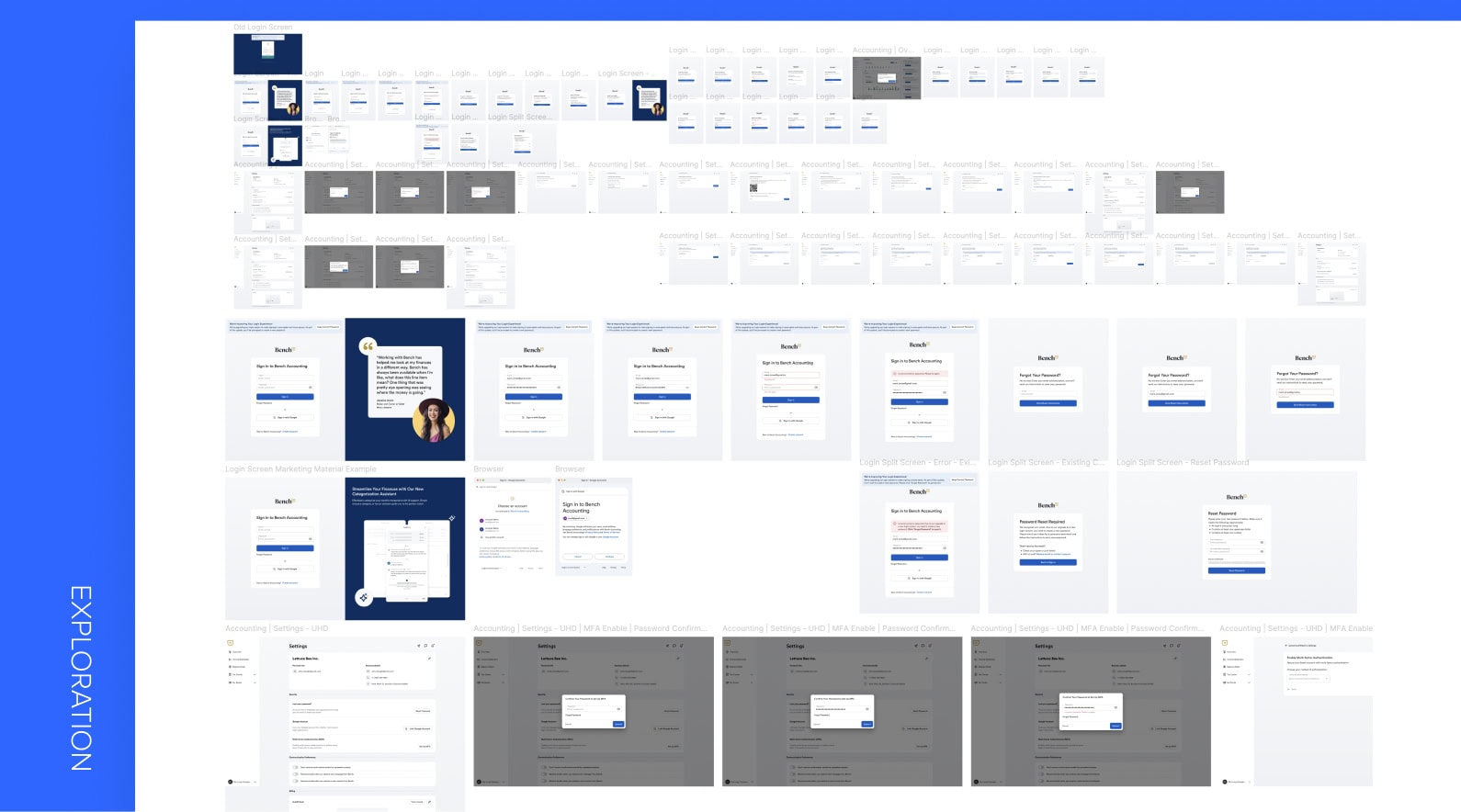
Exploration
Using a design playground approach, I iterated on layouts and interactions to refine the login and account management experience, testing variations before arriving at the final design.
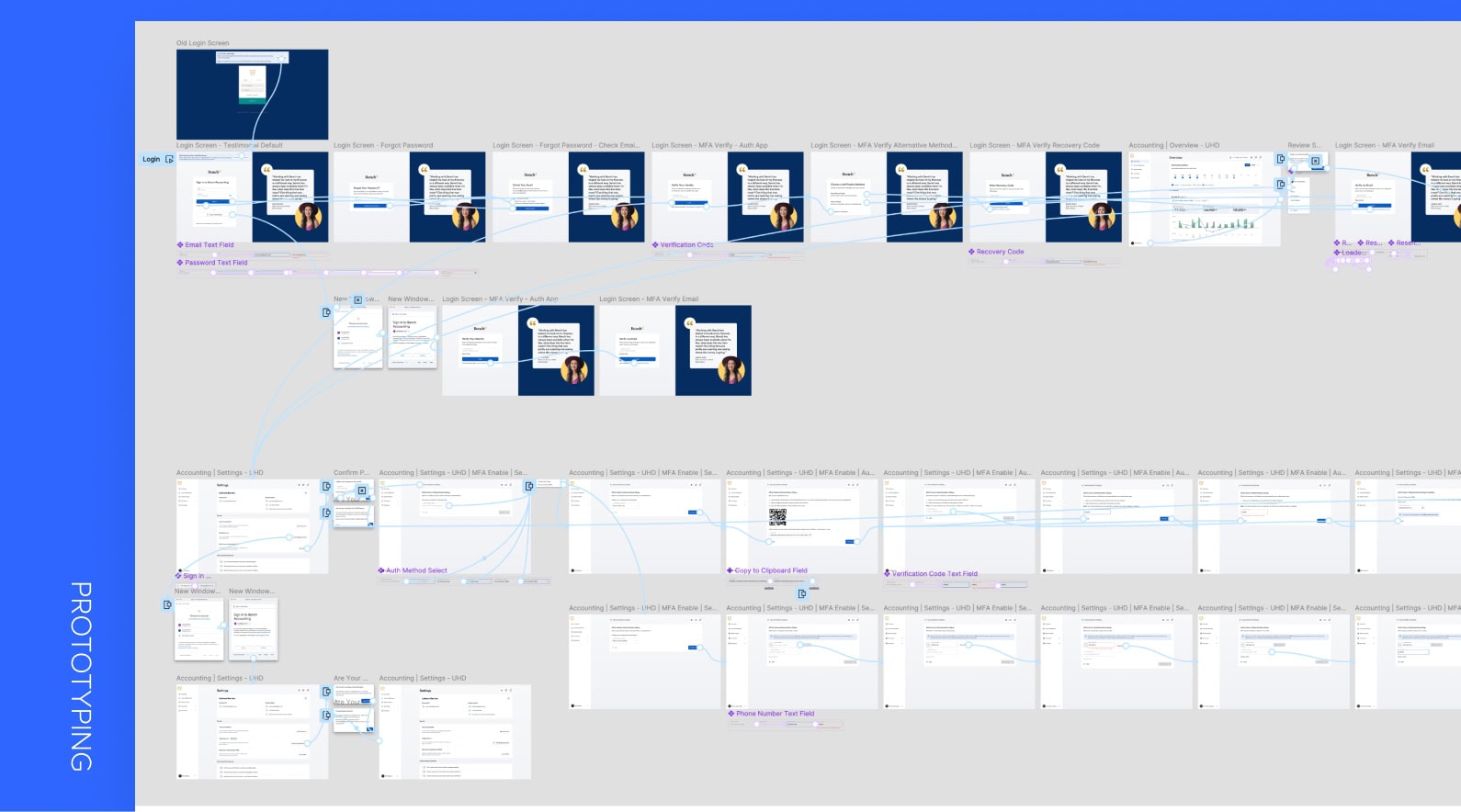
Prototyping
Interactive prototypes simulated key features like MFA enrollment, social login integration, and password recovery flows. These prototypes were tested with stakeholders, uncovering usability issues early and ensuring alignment before development.

Delivery
Comprehensive design specifications, including annotations for edge cases and interactions, were handed off to the engineering team. Regular check-ins ensured smooth collaboration during development.
Outcome:
Key takeaways:
Balancing security with user experience is essential.
This project underscored the importance of designing an authentication system that prioritizes both robust security features and a seamless user experience. Ensuring convenience while maintaining high security standards required careful consideration during every design decision.
An iterative design process drives impactful outcomes.
By following an iterative design approach, we were able to refine the user flows and interactions incrementally. This process ensured that both business objectives and user needs were met effectively.
Early prototyping and collaboration lead to better solutions.
Prototyping early and working closely with stakeholders allowed us to identify usability issues quickly, align on technical requirements, and streamline the implementation process.
Credits:
Lead Product Designer: Sabrina Chan (Senior Product Designer)
Lead Product Manager: Charlene Davidoff (Product Manager)
Lead Engineers: David VanDusen and Colin Gislason
